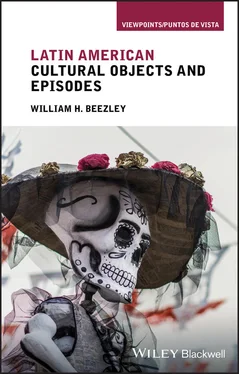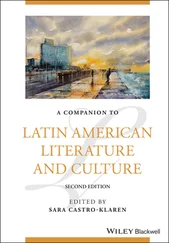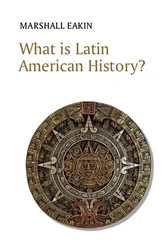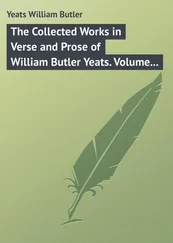Other hats beside bowlers top off the typical clothing of indigenous women in the Andes. Hats appear in Peru, Ecuador, northwestern Argentina, northeastern Chile, and, especially, Bolivia, where they make a statement as an emblem of identity. Especially for women from La Paz, consumption of derbies also allows urban Aymara ladies the conspicuous display of their social status. In one of South America’s poorest nations, the derby predominates in some communities but there exists a wealth of more than 100 hat styles for both women and men in a population of 6.4 million. Some women, preferring another style, have adopted a Stetson known locally as a “J. R. Dallas,” because it resembles what J. R. Ewing wore on the once popular television series (1978–1991). Gunnar Mendoza, director of Bolivia’s National Archives in Sucre, once declared, “I don’t know of another region in the world that has such a variety of hats.” Nevertheless, the derby, called in Spanish a bombín or sombrero hongo (a mushroom hat), predominates as the stereotypical female headgear especially in La Paz. Aymara women, who have dominated market trade, wear black, brown or gray bombines while selling fruits, vegetables, and today, home computers and compact discs. With their hats, they have become a picturesque part of the Bolivian city best known to visitors. Other women wear them throughout the Andes. As a result, hat‐making thrives as a business, from home shops and, until recently, the industry‐leading but now closed Charcas Glorieta factory in Sucre. Although typical today, the bowlers and similar hats preserve neither preconquest vestige headgear nor uniquely Aymara objects.
Shortly after arriving in the Andes, the Spanish brought guild workers who produced felt to make hats. 1 The fabrication involved the use of arsenic, and ingesting the chemical resulted in madness among the workers. In a strange episode, an entire guild of hat makers went crazy at the same time in Potosí, Bolivia – the richest and largest city in the Americas at the time – and they rioted through the streets. Despite the spectacle of mad hatters, production continued for Spaniards; for the indigenous new felt hat styles came only later.
Indigenous peoples did not immediately adopt Spanish hats because they had long used traditional head coverings, as demonstrated today by archaeological evidence. The monoliths and ceramics of the ancient Tiahuanaco culture centered near Lake Titicaca feature headgear of a flat, rectangular style. Later the ancient Aymara, confirmed in burial remains, adopted a conical hat without a brim. The Inca ruler did not use a hat at all, rather a head band that signaled his authority, although the men and women of this empire wore various caps.
The derbies, now traditional women’s wear especially in La Paz, had been typical for barely a century and a half when their adoption completed the evolving women’s clothing adaptations in the Andes. Following the Túpac Amaru Rebellion that racked the region from 1780 to 1782, the Spanish crown sent a Royal Inspector with extraordinary authority to evaluate its causes and make proscriptive changes. Inspector José Arreche concluded the rebellion, as a kind of cargo cult, had resulted from identification with traditional Inca society, so in order to destroy the collective memory of the indigenous greatness of the pre‐Spanish empire, he ordered prohibitions against speaking Quechua, celebrating Inca holidays, practicing cultural mores, and wearing of ethnic clothing. 2 One royal decree directed Spanish colonial landowners to require that indigenous peoples on their properties adopt the clothing typical of the Spanish provinces of the owner. 3 Villagers were forced to wear Spanish garments that already had become the clothing of Andean mestizos especially in Peru in an adaptation of the clothing worn by Spanish commoners (in Madrid called the Maja). For women it included a skirt with several petticoats, embroidered wrap, 4 a jacket‐like blouse, and often a large hat. Andean peoples resented being forced to wear Spanish clothes, and they tended to make changes, creating community distinctions in color, embroidery, and hat styles.
Villagers covered their heads with hats made of feathers, alpaca, tin, plaster, felt, straw, and tortora reeds, a type of bulrush that grows from Lake Titicaca, across Peru, to Easter Island. Perhaps the typical lluchu , a woven cap with ear flaps, comes from this era and was modeled loosely on the Catalan beret with flaps from Madrid. An alternative explanation posits that the cap, also called the Ch’ullus in much of highland Peru, dates about 600 CE from the pre‐Inca Mocha culture. Female residents of Tarija, near the Argentine border, adopted hats patterned after eighteenth‐century women from Andalusia. 5 Men and women from Jatamayu, in the highlands near Sucre, preferred helmet‐like headgear, roughly patterned on the helmets worn by sixteenth‐century Spanish conquerors, called monteras . Here women for weddings and fiestas use a flat hat, with a black cloth brim, two raised points on top, embroidery of green, red, and black threads and an assortment of silver beads and shingles. Various other versions of the montera exist with associated legends that it is a “secret map hat” indicating where Inca treasure had been hidden or that its decoration uses pre‐Spanish amulets to preserve indigenous religion. The sheep wool hat called an ovejón became typical in the rural communities of six Bolivian provinces: La Paz, Oruro, Potosí, Tarija, Chuquisaca, and Cochabamba. In the three lower provinces with tropical climates, women use palm hats. The ovejones were made with molds that enabled the shaping of a variety of hats that were worked until they became rigid. In many communities, men, women, and children wore these. For example, women’s hats of Ursia have a high crown shaped, according to one writer, like a warhead with a black strip around them at the base. In Potolo and Ravelo, they adopted low crowns decorated in many colors.
Some communities, especially remote ones, had hats that are not of the ovejón type. The members of the Yura community adopted woven hats of dark blue with low crowns that during fiestas were festooned with stars and moons in the shape of the owner’s initials. The Tarabuco community in Chuquisaca province had two styles, the shining montera, like the conquistador’s helmet with details representing the community, and the Pasha montera, worn only by women, with an elliptical shape reminiscent of Napoleonic‐era hats. These were decorated with embroidery, beadwork, and glass. As a base, the Pasha has white fabric that in case of mourning is exchanged for black. Unmarried females choose woolen hats. Boys in this community wear black wool caps covered with embroidery called a jokollo, or tadpole, in part because of the tail of the cap and also referring to their adolescence. 6
Styles in the provincial capitals varied. Striking women’s black hats in Potosí resembled those of medieval European witches. Those of Tarifa, at a lower altitude with warmer weather, were made of lighter cloth with low crowns and were worn on the back of the head. The resulting halo reflected the style of the Andalusian settlers who had come to the region. In Cochabamba, they wore the tarro cochabambino (the Cochabamba jar), an all‐white hat with a tall crown and wide brim, that featured a black ribbon. According to legend, a Roman Catholic priest ordered an unmarried Quechua woman living with her lover whom she intended to marry (a practice common among community’s engaged couples), as penance for adultery, to wear a black ribbon on her hat. At the next mass, all the Cochabamba women wore black ribbons as a comeuppance to the priest and the style persisted. 7 The women also still perform a dance called La Diablada (dance of the devil) wearing these hats. In La Paz, the women adopted this hat shape in black, brown, ivory, or white color without the ribbon.
Читать дальше












